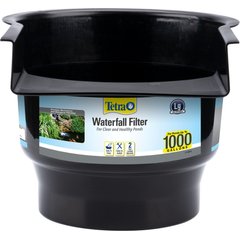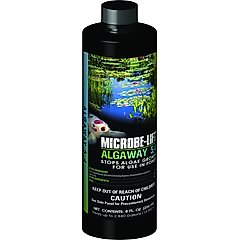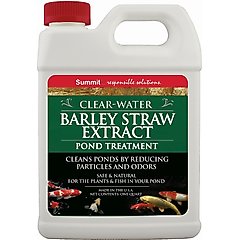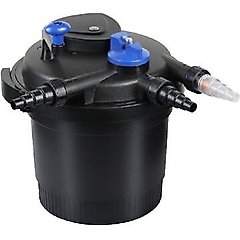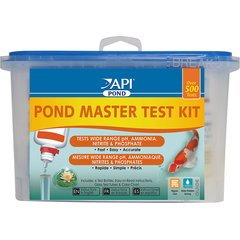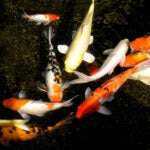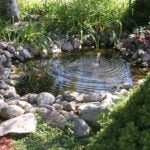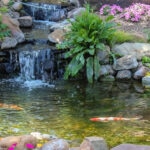Your Practical Guide To Caring for Pond Plants
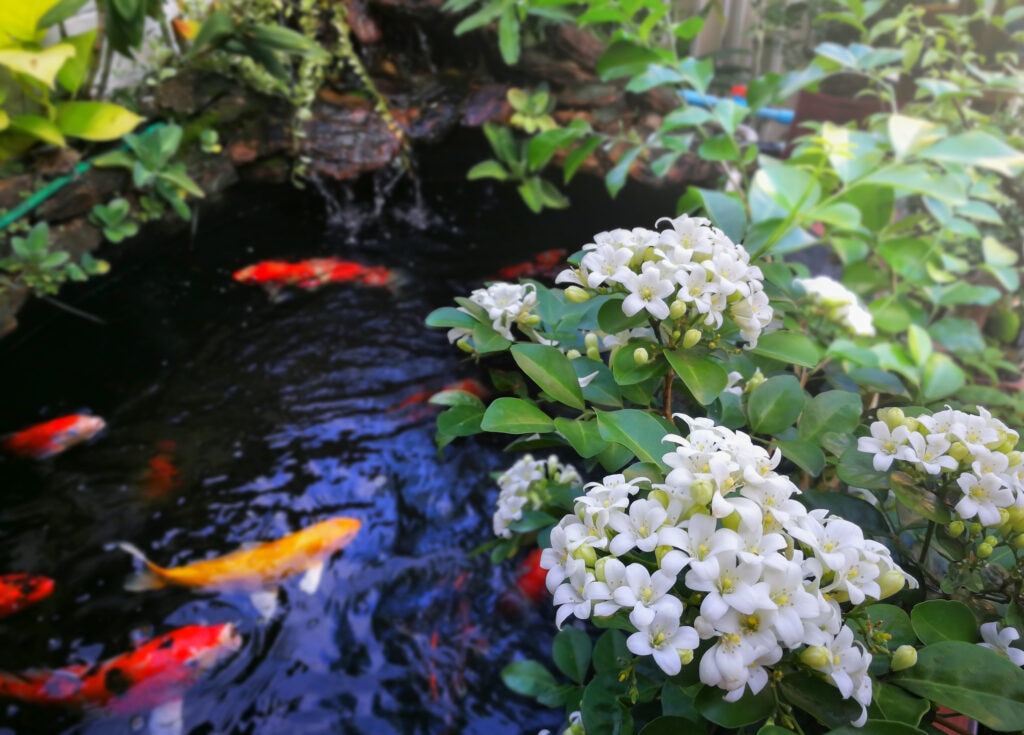
Photo by Chinnachart Martmoh/iStock/Getty Images Plus
A well-kept pond is a beautiful backyard feature, but it is also a living ecosystem with your plants at its heart. From oxygenating the water to offering shelter to wildlife and preventing algae, aquatic plants are vital to the health of your pond.
Whether you’re new to water gardening or want to improve your routine, this practical guide walks you through the basics of choosing, maintaining, and troubleshooting pond plants throughout the year. With a little effort and know-how, your pond can become a vibrant habitat.
Key Takeaways:
- Pond plants are generally divided into four groups, which are based on planting depth.
- Some pond plants are considered invasive in certain areas, so check your area’s guidelines before you plant.
- Plants in your pond need regular trimming and decluttering like any other garden to keep them healthy.
4 Types of Pond Plants
Experts divide pond plants into different groups based on their planting depth. Whether you’re creating a small water garden without fish or a large pond with koi, a variety of plants at different depths will help maintain a healthy balance of nutrients and keep the water cleaner.
“Pond plants improve water quality by absorbing excess nutrients like nitrates and phosphates, which helps prevent algae growth,” says Matthew Hayes, content creator at Fish Shop Matt, who has 20 years of experience in aquatics. “They can also produce oxygen and provide shade, keeping the water cooler and clearer.”
From marginal and submerged plants to deep water and floating plants, each plant adds beauty and offers different benefits. Maintaining your aquatic plants will enhance their natural beauty as they clean and oxygenate the water.
1. Floating Plants
Aside from their tranquil beauty, floating plants can help your pond stay healthy and balanced.
Others, like water hyacinth, water mint, and water lettuce, remove nutrients. They’re a good supplement to biological filtration (or chemical filtration) as they remove some nutrients that would otherwise have to be broken down by the biofilter (ammonia, nitrate) or chemical filtration (phosphate).
Recommended Product
2. Submerged Plants
Fully submerged plants like hornwort, fanwort, and anacharis thrive under the water’s surface, where they remove carbon dioxide and produce oxygen. They also help reduce algae growth, remove toxins and some heavy metals, and offer shelter to pond residents.
If your pond needs some extra help to combat algae buildup, try using products like Microbe-Lift Algaway Pond Algae Control.
Recommended Product
3. Marginal Plants
Cattails, pickerel rush, and irises are marginal plants that thrive in shallow water or wet soil at the edges of your pond. They don’t need to be underwater, and they thrive when they can keep their roots wet while their crowns stay mostly dry.
Marginal plants help filter the water, removing the nitrates and phosphates that feed algae. They also provide erosion control and shelter to insects, frogs, and birds.
Recommended Products
4. Deep Water Plants
These plants survive where other plants would die—like colder water, reduced sunlight, and higher water pressure. Deep water plants have adapted. Many produce more chlorophyll or have slime coats that protect the plants.
Deep water plants include water lotus and water hawthorn. These plants anchor deep under the water’s surface, where they help control erosion, oxygenate and remove toxins from the water, and offer shade to your pond inhabitants.
Research Before Purchasing Pond Plants
Plants you’ve considered for your pond may be controlled in your location. It’s always important to check first!
“I get asked to provide water hyacinth every single year, and it is illegal to possess, own, sell, or transport in the majority of the Southern states,” says Ryan O’Hanlon, lead aquatic horticulturist of Stonefly Aquatic Nursery in Whitesboro, Texas.
These beautiful plants are native to South America but have become invasive across much of the Southern United States. They become problems because they spread from ponds to waterways, where compete with native plants for nutrients and space.
How To Care for Your Pond Plants
Water garden plants and their ponds need regular maintenance. Fortunately, most of the routine work isn’t very difficult.
Here’s what you can expect, from daily to seasonal tasks.
Weekly Maintenance
Most pond plant upkeep is done weekly.
Maintenance includes removing debris and dead plant matter. It’s also a good time to trim “overgrowth to keep things tidy, just like weeding flower beds,” says Hayes.
Some pond plants grow quickly and can easily take over, including:
- Anacharis
- Hornwort
- Frogbit
- Water lettuce
- Red ludwigia
- These plants can easily overcrowd everything else out. Keeping your plants pruned regularly is vital.
Seasonal Maintenance
Your pond and its plants have different needs throughout the year; you can set calendar alerts to help you remember when different tasks need to be done.
Spring
Just like a vegetable garden, spring is a perfect time to add new species or to divide plants that have grown out of their current spaces. It’s also a great time to do some extra cleanup to remove excess debris and remove dead foliage.
Hayes says you should fertilize during the growing seasons, spring and summer, but cautions against overdoing it, because you risk algae problems. Additionally, fertilizers should be aquatic-specific, like slow-release tabs or liquids.
Summer
The long, sunny days of summer will give your pond plants the light they need to grow… and grow some more. You may find that your plants need more trimming and thinning!
Keeping plants trimmed will help keep your pond balanced and healthy—you may also need to continue fertilizing them. During this time, pay extra attention to the water level and adjust as needed.
Fall
As the seasons change, fall’s still-warm days and cooler nights can encourage algae blooms. To prevent them, take extra care to clean up leaf litter and other plant material that can decompose and feed algae. You can also use a barley straw extract treatment to help keep your pond clear.
Fall is also the time to stop fertilizing and trim back the foliage to get ready for winter.
Recommended Product
Winter
If your winter temperatures drop below your pond plants’ safety zones, the plants need to be brought indoors for the winter. Plants that naturally go dormant can be left as they are—in fact, try not to disturb them.
Tropical plants are the most susceptible to freezing temperatures, but temperate aquatic plants are also vulnerable. Hardy plants can be moved to deeper water or left as is, depending on the species.
Pond Plant Care Tips and Tricks
Consider these tips when caring for your pond and its plant life:
- Stop mowing and weeding all the way to the edge of the pond, says O’Hanlon. “Allowing that grass to grow 1–3 feet away from that pond … is [going to] really help with your erosion.” O’Hanlon says. When pond owners landscape all the way to the edge, the roots of the grass don’t have a chance to develop well enough to hold on to the soil—allowing your pond to fill with muck.
- Use native plants wherever possible. Natives are easier to grow in your backyard pond, and they aren’t going to cause the same problems as invasive plants if they spread.
- Be consistent. O’Hanlon says that most issues arise because pond owners fall behind on maintenance.
- Don’t neglect the pond filters! Hayes explains that you should clean them at least monthly to keep the pond water healthy and clear. “This can sometimes be weekly if you have a dirty pond.”
Recommended Products
Best Practices for Healthy Pond Plants
Be sure to keep track of all the factors that keep your plants healthy: sunlight, water depth and quality, local climate, and fertilization.
- Monitor growth
- Prune regularly
- Fertilize your plants
- Control invasive plants
- Track water quality with the API Pond Master Test Kit
Recommended Product
Common Pond Plant Problems and How To Avoid Them
With proper maintenance, you should be able to avoid the most serious pond plant problems. O’Hanlon explains that maintenance lapses are among the biggest issues he sees with ponds.
Algae blooms can happen anywhere. Warm days and cool nights of spring and fall can give algae the perfect conditions to take off. A great balance of pond plants will help prevent it because they compete with algae for nutrients.
Yellowing or dying leaves can indicate a nutrient imbalance or pests.
“Healthy plants have strong, green leaves and steady growth,” says Hayes. “Watch for yellowing, holes, or wilting, which can be a sign of pests or disease. Remove dead or damaged parts and rinse off pests with water. There are very few pond-safe pest treatments on the market, so be cautious with sprays or chemicals.”
Plant overgrowth is an ongoing problem for many ponds. O’Hanlon explains that the smaller the body of water, the faster a plant can spread—it takes longer to get out of hand in a bigger body of water.
“I always tell people that anything you introduce into your pond … is [going to] grow somewhere you don’t want it to grow,” O’Hanlon says.
Poor water quality affects more than the fish you plan to keep; it can make your plants sick too. Water that smells bad or never quite clears up can be a symptom of bigger problems that a water change or better filtration can help ease.
Conclusion
Your pond and its plants should function as a biodiverse ecosystem. As you spend time enjoying your backyard oasis, watch for changes to the plants, water, or animals that you can address before they become problems.
By balancing the needs of your aquatic pets and plants, you can create a lush, thriving habitat where fish, frogs, and other animals live within the shelter of your pond plants. With proper care and maintenance, your water garden can be a source of enjoyment for years to come.
